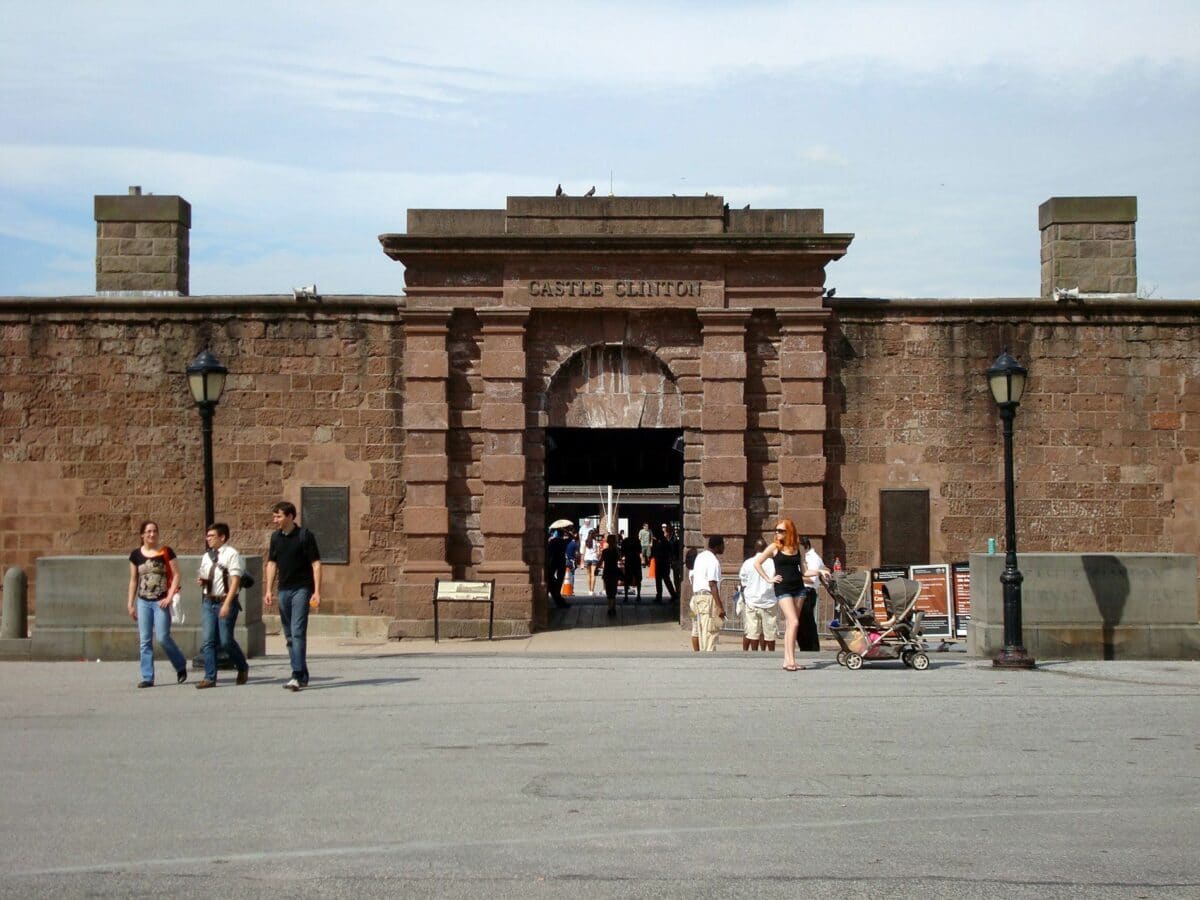Fort Clinton is a military fortress that dates back to the early 19th century. It is located on the southern tip of Manhattan Island where it appears to watch over the passage of ships entering New York Bay.
History of Fort Clinton
Fort Clinton, or Castle Clinton, is a military fortress built of sandstone on a small, purpose-built island. Fort Clinton is circular in shape and construction began in 1808 and was completed three years later, although further development was decided upon in the 20th century. The two architects who directed the construction of the fortress were Jean McComb Jr. and Jonathan Williams. At the time, the fort was called West Battery and thus had an independent forward position off Manhattan.
West Battery was part of a defense system that included Castle Williams on Governors Island. The purpose of these fortresses was to defend New York against an invasion by the English fleet. What makes the West Battery unique is that it never had to participate in a conflict or defend its shores. Later, Battery Park, which stood at the tip of Manhattan Island, was enlarged and extended out to sea until it joined and encompassed the fort.
In 1815, the fortress was renamed Fort Clinton in honor of the mayor of New York from 1803 to 1815, DeWitt Clinton. From 1817 to 1823, this politician also participated in the presidential elections of 1812, which were eventually won by James Madison.
Fort Clinton ceased to be used for military surveillance and protection in 1821. The fortress was then leased to the city of New York and the place became an entertainment area. New Yorkers could walk around and eat before attending a play or an opera performance. Known as Castle Garden during this period, the fort saw international artists such as Jenny Lind (1820-1887) or Louis-Antoine Jullien (1812-1860) who performed one of his original concerts where classical music is associated with light shows.
From 1830 to 1890, Castle Garden became the headquarters for the administration of immigrants who arrived in New York via Ellis Island. More than 10 million immigrant records were archived there. In 1896, the New York Aquarium moved into the Castle Garden. Every year, hundreds of thousands of visitors came to visit this site. In 1941, the aquarium was moved to Coney Island, and Fort Clinton was eventually left to the management of the National Park Service.
Today, visitors can walk in Battery Park, follow the ramparts, visit the museum, or take the ferry located at the foot of Fort Clinton to go to Ellis Island or to see the Statue of Liberty.
Opening hours and prices: free of charge.


